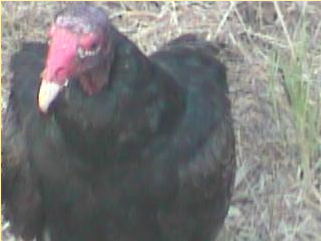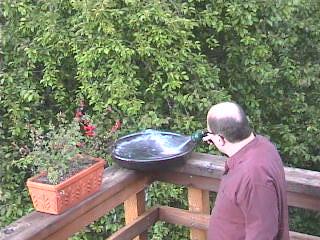Several of us have been active participants in CONE Welder for many months. We’ve developed a few guidelines that help us get along with each other, and allow everyone to take good pictures.
Be aware that there is only one camera, and it is shared by everyone who is currently logged in (left side of Chat screen). If several people try to drive the camera at the same time, no one gets a decent picture, and everyone gets frustrated.
The first guideline is: Only one camera driver at a time.
How do you know if someone is driving? If the camera lens (on the right side of your screen) is moving over the landscape, or around some feeder, then someone else is driving. If it is not moving, then the current driver may be waiting for the camera to move (sluggish internet connection), may be waiting for the return of something that just jumped off-screen, or may wish someone else would take over.
What if you want to drive the camera? Keep the Chat window open – you don’t have to participate in conversations unless you want to. If you want to drive the camera, on the Chat screen ask: “May I take the camera?” Abbreviated to MITC? Then wait 30 seconds. Someone will let you know if they really need to continue. Otherwise, you are free to take the camera.
The second guideline is: Ask first; don’t just grab the camera.
When you are finished driving the camera: Use the Chat function to announce “Camera is free.” Abbreviated to CIF.
So now you’ve taken a picture, what next? For those pictures worth keeping, try to zone your pictures promptly. If the picture contains images that are so small or fuzzy that they cannot readily be identified by others, it may be appropriate to delete the picture. It you keep such a picture, it’s considerate to add a note to the comment section indicating the classification you have assigned. Otherwise the picture may languish forever in the Unclassified files. If you are unsure about the correct identification, use the Chat function to ask others for assistance. If you have two or more species in one picture, zone each species separately. If you have two or more of the same species in one picture, you may zone them together or separately. [If you zone them separately, you get more points – a boon to the more competitive among us, and an annoyance to everyone else!] Zone separately any bird that has a band or other unique characteristic. The system gives you an hour from the time you take the picture until the picture appears on the “public” screen. It is best to get your picture zoned before it becomes public.
There are unzoned pictures on the public screen. Should I zone them? No. Sometimes photographers keep several pictures for a while – trying to decide which to delete. If you put a zone, comment, or star on that picture, the picture can no longer be deleted. When looking at those pictures, try to keep your hands off the keyboard! It’s okay, though, to use the Chat function to remind the photographer that s/he has unzoned pictures.
The third guideline is: Don’t put zones, comments, or stars on someone else’s unzoned picture.
Can I take a picture of anything? Pretty much, yes. Keep in mind that the Welder study is concerned with range expansion for several traditionally subtropical bird species (see the link for the list on the About page). So it’s good to get pictures of those species when you can. Birds, insects, mammals, reptiles – are all fair game. Occasionally you may also see people. But – just like at home – don’t take pictures of people without their permission: it’s an invasion of their privacy.
Other questions? Use the Chat function to ask. Among the people logged in, there is likely to be someone who will be glad to answer or refer you to a place where you can get an answer.















